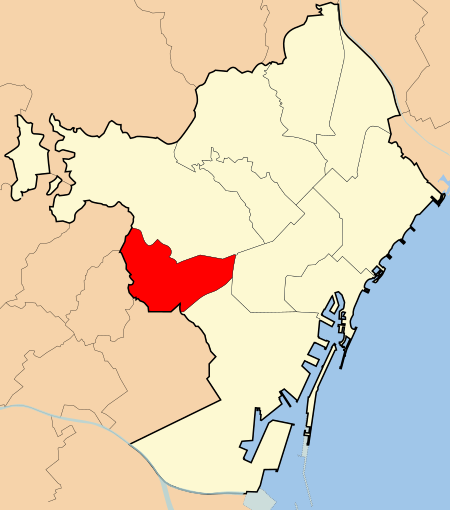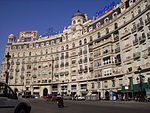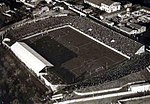Les Corts (district)

Les Corts (Catalan pronunciation: [ləs ˈkoɾts]) is one of the ten districts into which Barcelona, Spain has been divided up since 1984, numbered IV. It was created in 1897 out of two former municipalities: Les Corts de Sarrià and some parts of Sarrià (the remaining of which went to become the current district of Sarrià-Sant Gervasi). It had 82,588 inhabitants in the 2005 census, which makes it the least populous district of the city. It is located in the western part of the city, next to three other districts of Barcelona : Sarrià-Sant Gervasi, Eixample as well as Sants-Montjuïc, and two municipalities of the Metropolitan Area of Barcelona: L'Hospitalet de Llobregat and Esplugues de Llobregat.
Excerpt from the Wikipedia article Les Corts (district) (License: CC BY-SA 3.0, Authors, Images).Les Corts (district)
Avinguda de Josep Tarradellas, Barcelona
Geographical coordinates (GPS) Address Nearby Places Show on map
Geographical coordinates (GPS)
| Latitude | Longitude |
|---|---|
| N 41.387369444444 ° | E 2.1418194444444 ° |
Address
Avinguda de Josep Tarradellas 268
08001 Barcelona
Catalonia, Spain
Open on Google Maps








